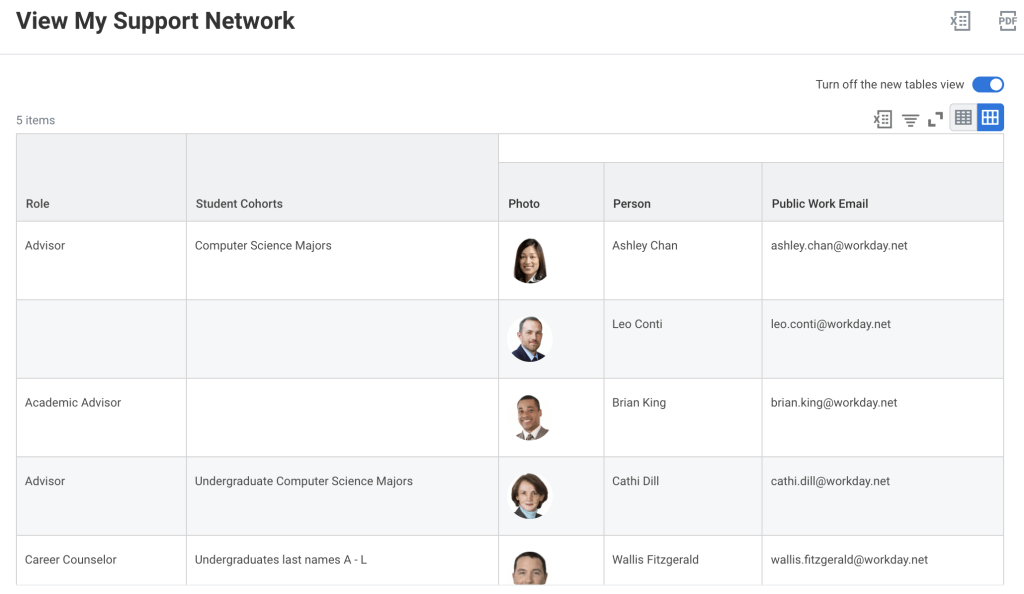Imagine a Washington University where students can easily look up their advisors, plan out their course requirements years in advance, and track their academic progress all in one system. Regardless of their school, changes in program of study, or participation in programs across schools, that system remains the same. It’s also accessible via smartphone.
Imagine, in this system, advisors can quickly view their students’ academic information, like which courses they’re enrolled in and how they’re progressing toward their educational goals. Advisors also can see whether a student may need extra support by reviewing notes left by other people in a student’s support network.
Plus, student data is all in one place, in the same format, which means administrators and others can not only get a full picture of a student’s progress, but also pull reports and view dashboards to inform decisions and actions.
Workday Student will help us achieve this reality. University leadership, including Provost Beverly Wendland and the deans, have committed to this vision for the future. Practically speaking, that commitment will involve each school retiring its current systems for advising-related tasks and learning to use Workday Student. At last count, there were 10 systems being used for advising across the university.
This shift will be a significant change, especially for areas that are satisfied with their current advising systems and for advisors who’ve developed their own unique processes over the years. However, the benefits of unifying our approach are anticipated to outweigh the challenges ahead.
Students are whole people.
Jennifer Smith, vice provost for educational initiatives
Vice Provost for Educational Initiatives Jennifer Smith empathizes with her colleagues, admitting that she “really likes WebAdvising,” the system used by Arts & Sciences, where she teaches in earth and planetary sciences. However, she’s choosing to focus on the advantages of making the switch, particularly for students studying across schools.
All schools operating in one system with shared notes “will actualize the idea that we’re a team working in support of a student,” said Smith. “Students assume there’s some level of connectivity” among the people they talk to about their academics, regardless of their associated school or office. That’s not always the case currently, since the people a student talks to may be taking notes in different systems, or even on paper. “Students are whole people,” she added. “The advice that we give as individual advisors shouldn’t exist in a vacuum. Understanding what students are discussing with other advisors can only help us help them.”
Advisors should also benefit from a unified system for advising. Sean McWilliams, who worked in Arts & Sciences advising for about 17 years, echoes Jen’s enthusiasm for Workday’s shared notes capabilities. Now a change manager for the Student Sunrise project, Sean recalls the difficulty of supporting students in a disjointed environment.
“In my work, I really appreciated how colleagues across campus were committed to working with students in a coordinated and impactful way,” said McWilliams. “However, it was often difficult to know who all the members of a student’s support team were. For instance, when I first started, instructors had no way to contact a student’s advisor. These challenges were largely because we all worked in different systems. The Student Sunrise project, and the move to Workday in particular, will empower our faculty and staff to share information more easily and work together to better support our students.”

In addition to student notes, future editions of Student Sunrise Spotlight will focus on Workday Student’s other advising capabilities, including academic planning, academic progress, “what if” analyses (which determine the feasibility of students exploring other programs of study based on their academic progress) and degree auditing.